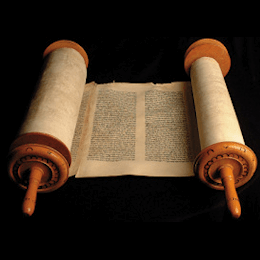Textus Receptus Bibles
Masoretic Text 1524
Old Testament
| 4:1 | והחזיקו שׁבע נשׁים באישׁ אחד ביום ההוא לאמר לחמנו נאכל ושׂמלתנו נלבשׁ רק יקרא שׁמך עלינו אסף חרפתנו׃ |
| 4:2 | ביום ההוא יהיה צמח יהוה לצבי ולכבוד ופרי הארץ לגאון ולתפארת לפליטת ישׂראל׃ |
| 4:3 | והיה הנשׁאר בציון והנותר בירושׁלם קדושׁ יאמר לו כל הכתוב לחיים בירושׁלם׃ |
| 4:4 | אם רחץ אדני את צאת בנות ציון ואת דמי ירושׁלם ידיח מקרבה ברוח משׁפט וברוח בער׃ |
| 4:5 | וברא יהוה על כל מכון הר ציון ועל מקראה ענן יומם ועשׁן ונגה אשׁ להבה לילה כי על כל כבוד חפה׃ |
| 4:6 | וסכה תהיה לצל יומם מחרב ולמחסה ולמסתור מזרם וממטר׃ |

Masoretic Text 1524
The Hebrew text of the Old Testament is called the Masoretic Text because in its present form it is based upon the Masora—the Hebrew, textual tradition of the Jewish scholars known as the Masoretes (or Masorites). The Masoretes were rabbis who made it their special work to correct the faults that had crept into the text of the Old Testament during the Babylonian captivity, and to prevent, for the future, its being corrupted by any alteration. They first separated the apocryphal from the canonical books, and divided the latter into twenty-two books, being the number of letters in the Hebrew alphabet. Then they divided each book into sections and verses.
There is a great difference of opinion as to when the Masoretic Text was written, but it was probably accomplished in the 10th -11th century. Several editions existed, varying considerably, but the received and authoritative text is that of Jacob ben-chayim ibn Adonijah, who carefully sifted and arranged the previous works on the subject. It was published in 1524.